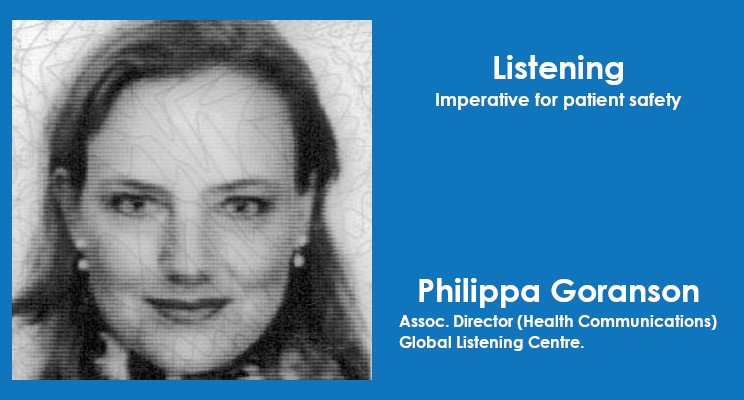
Listening: imperative for patient safety
Listening in the healthcare encounter is a complex matter–even if it appears easy at first glance. In fact, listening is an underused potential. Listening is about understanding what the patient is saying to draw out the fundamental ideas, while gathering information to find answers and weigh options. Therefore, a culture of listening in healthcare promotes a personalized approach in the diagnostic process. Attentive listening is a way to resist bias, stereotyping, and only keeping to one track while contemplating a probable diagnosis, where there might be more than one. Listening helps doctors to ask the right questions, instead of jumping to conclusions.
Listening is also about showing respect, creating knowledge in a dialogue, connecting, and building a relationship. Listening demonstrates acceptance, promotes problem-solving abilities, increases the self-esteem of the other person, helps overcome self-centeredness, and prevents head-on emotional collisions. Communication skills in healthcare are not held in high regard, however. Listening is defined as the lost communication skill.
Listening is a way of using a higher order of thinking and reasoning, but in healthcare it is largely ignored in research and teaching. Interventions to promote listening in healthcare need to target health care policy, research, and clinical practice. Listening is also about informing patients on how to proceed for better listening in healthcare. Listening policy in healthcare is needed to promote the patient’s voice.
Listening is not known to be a physician’s strength. Patients are usually interrupted within 10–18 seconds of their opening narrative. Physicians prefer to use rational close-ended questions, effective checklists framing symptoms, and easy diagnostic guidelines. These frames fit how the healthcare system is designed. They and the healthcare design turn physicians into clerical workers, making them go numb in the process. Physicians are reimbursed by how many tests they produce, not on how much time they spend listening to the patient. Therefore, 30% of tests are unnecessary, and only 12% of physicians’ time is spent with patients. Meanwhile, 40% of physicians’ time is spent on the computer.
By the time you’ve defined someone as a patient, you’ve already broken the frame. To reduce their humanity to their ‘patient-ness’ and then to further reduce it to the frame of how they could fit your pre-conceived label ….
